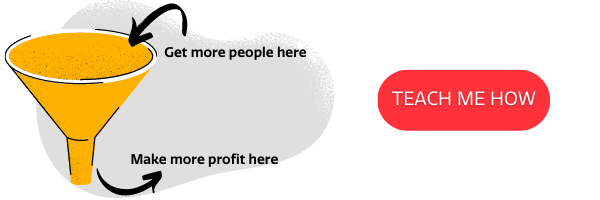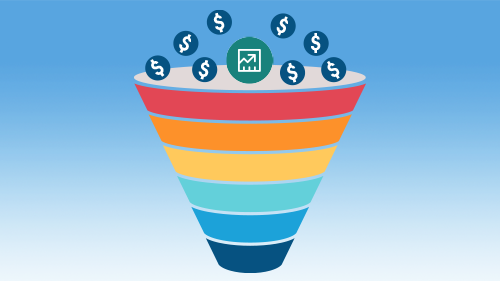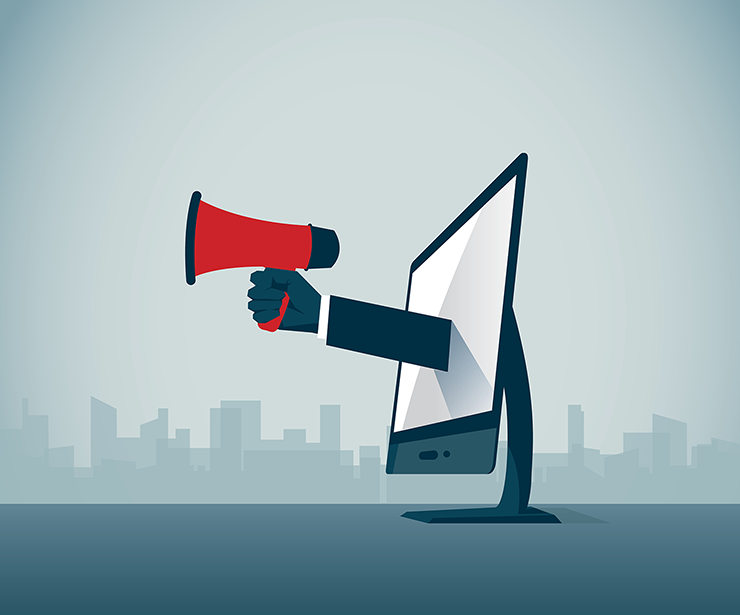A SaaS marketing funnel is a powerful tool that allows businesses to effectively attract and convert potential customers into loyal users. In this article, we will dive deep into the topic of SaaS marketing funnels to help you understand their importance and provide you with a step-by-step guide to creating a winning funnel for your business.
The SaaS Marketing Funnel
A SaaS Marketing Funnel is a visual representation of the different stages a potential customer goes through before making a purchase or becoming a paying user of a SaaS product. It consists of three main stages: awareness, consideration, and decision.
At the awareness stage, potential customers become aware of your SaaS product through various marketing channels such as social media, content marketing, or online advertising. They may come across your brand while researching a problem they need to solve or stumble upon your product while browsing the web.
Once potential customers move into the consideration stage, they have shown interest in your SaaS product and are actively evaluating whether it meets their needs. This is the stage where you can provide them with valuable content, such as case studies, product demos, or free trials, to help them make an informed decision.
At the end of the road comes the decision stage. It is when potential customers have gathered enough information and are ready to make a purchase or sign up for your SaaS product. This is where you need to provide a seamless and frictionless buying experience, ensuring that the process is quick and easy.

Why is a SaaS Marketing Funnel Essential for Your Business?
Having a well-defined SaaS marketing funnel is essential for your business for several reasons. First, it allows you to understand your customers' journey and tailor your marketing efforts accordingly. By aligning your messaging and content with each stage of the funnel, you can effectively nurture leads and increase conversions.
At he awareness stage, you can create educational blog posts or social media content that addresses common pain points your target audience may have. This helps build brand awareness and positions your SaaS product as a solution to their problems.
In the consideration stage, you can provide in-depth product guides, webinars, or personalized demos to showcase the unique features and benefits of your SaaS product. This helps potential customers evaluate your product and understand how it can solve their specific needs.
Second, a SaaS marketing funnel provides you with valuable insights into the performance of your marketing campaigns. By tracking key metrics at each stage of the funnel, you can identify bottlenecks and areas for improvement, ultimately optimizing your marketing efforts.
For instance, if you notice a high drop-off rate between the consideration and decision stages, it may indicate that potential customers are encountering obstacles or uncertainties that prevent them from taking the final step. By analyzing the data and understanding the reasons behind this drop-off, you can make necessary adjustments to your messaging or user experience to increase conversions.
What is more, a SaaS marketing funnel helps you prioritize your marketing resources and budget effectively. By understanding which stages of the funnel require more attention or improvement, you can allocate your resources strategically to achieve the best results.
Business dynamics can’t be ignored. A well-defined SaaS marketing funnel is a powerful tool that guides potential customers through the buying process, helps you understand their needs, and allows you to optimize your marketing efforts. By leveraging this funnel, you can increase conversions, drive growth, and ultimately succeed in the competitive SaaS industry.
The Anatomy of a Successful SaaS Marketing Funnel

Top of the Funnel: Awareness Stage
The top of the funnel is where potential customers become aware of your SaaS product. This is the stage where you cast a wide net to attract a large audience. Your goal here is to create brand awareness and educate your target audience about the problem your product solves.
To effectively capture the attention of your target audience at the awareness stage, you can utilize content marketing strategies such as blog posts, social media campaigns, and guest posting on relevant industry publications. By providing valuable and educational content, you can position yourself as a thought leader and build trust with your audience.
Middle of the Funnel: Consideration Stage
Once potential customers are aware of your SaaS product, they enter the consideration stage. Here, they are evaluating different solutions to their problem and considering whether your product is the right fit for them. This is the stage where you need to nurture leads and provide them with more detailed information about your product.
To effectively nurture leads at the consideration stage, you can create in-depth guides, case studies, and webinars that showcase your product's unique features and benefits. Additionally, providing free trials or demos can allow potential customers to experience your product firsthand, helping them make an informed decision.
Bottom of the Funnel: Decision Stage
The decision stage is where potential customers are ready to make a purchase or become paying users of your SaaS product. At this stage, your goal is to provide a seamless and persuasive experience that convinces them to choose your product over the competition.
To encourage conversions at the decision stage, you can offer special discounts, limited-time offers, or personalized demos. Additionally, providing social proof such as customer testimonials or case studies can help build trust and alleviate any final hesitations potential customers may have.
Step-by-Step Guide to Building Your SaaS Marketing Funnel
Identifying Your Target Audience
The first step in building your SaaS marketing funnel is to identify your target audience. Understanding who your ideal customers are and what pain points they have will allow you to tailor your marketing efforts and create relevant content that resonates with them.
Conduct market research, analyze customer data, and create buyer personas to gain a deep understanding of your target audience. This will help you craft compelling messaging and develop content that addresses their specific needs and challenges.
Creating Engaging Content for Each Stage of the Funnel
Once you have identified your target audience, it's time to create engaging content that aligns with each stage of the funnel. At the top of the funnel, focus on creating educational and informative content that grabs the attention of your audience and introduces them to your brand.
In the middle of the funnel, provide more in-depth content that showcases the value and features of your product. Develop case studies, use cases, and comparison guides that highlight what sets your product apart from the competition.
Finally, at the bottom of the funnel, deliver persuasive and actionable content that encourages potential customers to take the next step. Include calls-to-action that prompt them to sign up for a trial, request a demo, or make a purchase.
Implementing Effective Call-to-Actions
Call-to-actions (CTAs) play a crucial role in guiding potential customers through the marketing funnel. To optimize your SaaS marketing funnel, you need to implement effective CTAs that provoke action and move prospects closer to conversion.

Make sure your CTAs are clear, compelling, and visually appealing. Use action-oriented language and place your CTAs strategically throughout your website and content. Consider A/B testing different variations of your CTAs to identify which ones generate the highest click-through and conversion rates.
Optimizing Your SaaS Marketing Funnel
Analyzing Funnel Performance
Regularly analyzing your SaaS marketing funnel's performance is crucial for identifying areas of improvement and optimizing your campaigns. Track key metrics such as website traffic, conversion rates, and customer acquisition costs to gain insights into the effectiveness of your funnel at each stage.
Use web analytics tools like Google Analytics or specialized marketing automation platforms to measure and track these metrics. Identify which stages of the funnel have the highest drop-off rates and focus on optimizing those areas to ensure a seamless and effective customer journey.
A/B Testing for Funnel Optimization
A/B testing is an effective method to optimize your SaaS marketing funnel. By testing different variations of your landing pages, CTAs, or email subject lines, you can gain valuable insights into what resonates best with your audience and drives higher conversions.
Make small, incremental changes and compare the results to determine which variation performs better. Use A/B testing tools like Optimizely or Google Optimize to streamline the testing process and gather statistically significant data to inform your optimization efforts.
Leveraging Analytics for Continuous Improvement
Lastly, leverage analytics data to continuously improve and refine your SaaS marketing funnel. Monitor trends, identify patterns, and make data-driven decisions to enhance the overall performance of your funnel.
Regularly review your funnel analytics and make adjustments as needed. Experiment with new content formats, distribution channels, or messaging to keep your funnel fresh and engaging. Stay up-to-date with industry trends and best practices to ensure your funnel remains competitive.
Don't Wait
With this step-by-step guide, you can create a winning SaaS marketing funnel that attracts, nurtures, and converts potential customers into loyal users. Remember to continuously optimize and refine your funnel based on data and customer feedback to stay ahead in the ever-evolving SaaS landscape.


-AK-148968-preview.png?width=842&height=310&name=1.01-1x1px-Embertribe-(Client-Services)-AK-148968-preview.png)








-1.jpg)






%20-%20500x500%20-%20SP%20-%2045.01.png)
%20-%20500x500%20-%20SP%20-%2049.01.png)
%20-%20500x500%20-%20SP%20-%2057.01.png)


.png)